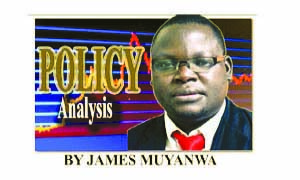THE bitter-sweet taste Zambia was left with after the International Monetary Fund (IMF) and World Bank experience in late 1990s and early 2000s seems to be haunting the southern African country.
The issues of Heavily Indebted Poor Countries (HIPC) Initiative are seemingly unforgettable.
The World Bank, the IMF and other multilateral, bilateral and commercial creditors began the HIPC Initiative in 1996.
The programme was designed to ensure that the poorest countries in the world, like Zambian then, were not overwhelmed by unmanageable or unsustainable debt burdens.
It reduced the debt of countries meeting strict criteria as most of them qualified for debt-relief.
For Zambia, they resulted in higher economic growth rate and lower inflation rates as well as other superlative economic indicators.
But not without casualties in form of job losses and other social challenges!
In last 10 years or so the government has taken the country to the position it was at more than two decades ago, when it needed such bitter-sweet prescriptions due to over-borrowing.
For instance on January 27, this year we indicated that Zambia was priotising getting an Extended Credit Facility (ECF) from the IMF to stabilise the economy.
We indicated that the Zambian government would meet with the IMF officials from February 11 to 13, this year to start negotiations on the matter.
That was according to then Secretary to the Treasury Fredson Yamba.
For some reason, which I am not privy to, the IMF staff team led by David Robinson held virtual meetings, instead, from February 11–March 3 2021.
I have written on this issue for myriad times and using expert information I have answered the question of whether Zambia needs an IMF package or not.
In the first recent article I looked at a country’s eligibility for ECF and other issues surrounding the facility since IMF has a number of other programmes which it can offer to a member country and the ECF was just one of them.
Using the aspect of quotas which are normally reviewed, and possibly adjusted, every five years, I arrived at $1.4 billion as the maximum amount Zambia could possibly get interest-free under the ECF.
I thought that the background is cardinal so that we could all move at the same level in terms of knowing what is at stake.
The discussions which covered economic developments, the near-term macroeconomic challenges, and policy options to return Zambia to a sustainable macroeconomic position over the medium-term did not yield much.
That was because key challenges like implementing fiscal reforms to correct current large fiscal imbalances; increasing fiscal revenues to provide the needed fiscal space to achieve development objectives and bolstering governance remained.
Others were efficiency of the use of public resources, including through debt and expenditure transparency, halting the incurrence of domestic arrears and ensuring that the social protection scheme was fully funded with timely payments.
Zambia received support under the Group of 20 (G20) Debt Service Standstill Initiative, which provides some debt relief in 2020 and the first half of 2021, but with debt already unsustainable prior to the COVID-19 shock, Zambia has sought a comprehensive debt treatment under the G-20 Common Framework.
Some of the key challenges that still need to be addressed are detailing the fiscal reform agenda to achieve the large and sustained fiscal consolidation needed to correct current fiscal imbalances.
The others were securing increased fiscal revenues to provide the fiscal space for government to meet its development objectives and bolstering governance and the efficiency of the use of public resources, including through debt and expenditure transparency.
And yet others are halting the incurrence of domestic arrears (including on fuel and in the electricity sector); and ensuring that the social protection scheme is fully funded with timely payments.
It is hoped that the recent sharp increase in copper prices, hovering around $9,000 per tonne should also provide additional resources to help smoothen the adjustment.
The PF failed to get the ECF and following the takeover of the United Party for National Development (UPND) the government has continued scouting for a programme with the IMF.
Just last week the country and IMF concluded technical discussions on new economic reform priorities.
Finance Minister Situmbeko Musokotwane said the talks enriched the 2022 Budget framework and the 2022-2024 Medium Term Expenditure Framework.
According to a statement issued by the IMF on Monday, after the August election, the new Zambian government invited the IMF for a virtual staff visit to share their key policies and reform measures.
The IMF team, led by Mission Chief for Zambia Allison Holland, held the meetings with Zambian authorities from September 27 to October 1, 2021.
At the conclusion of the visit, Ms Holland said the IMF welcomed the opportunity to hear an update on recent fiscal and macroeconomic developments and learn about the new authorities’ reform priorities.
These focus on restoring macroeconomic stability, re-establishing fiscal and debt sustainability, generating growth, and improving human development.
“In light of the deeply challenging macro-economic environment that prevails, the new administration faces an urgent need to take steps to restore sustainability while protecting the vulnerable and creating more inclusive growth.
“The discussions last week provided us with a better understanding of how the authorities’ reform priorities are informing their 2022 Budget preparations,” Ms Holland says.
She says the IMF looks forward to discussions on a fund-supported programme in the near future.
That is where the country is now but it is not in a new position especially in the last 10 years.
For comments call: 0955 431442, 0977 246099, 0964 742506 or e-mail:
jmuyanwa@gmail.com.







